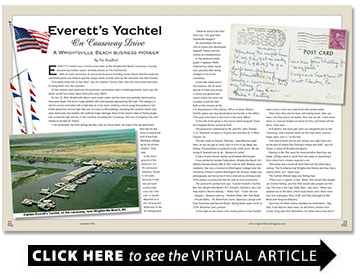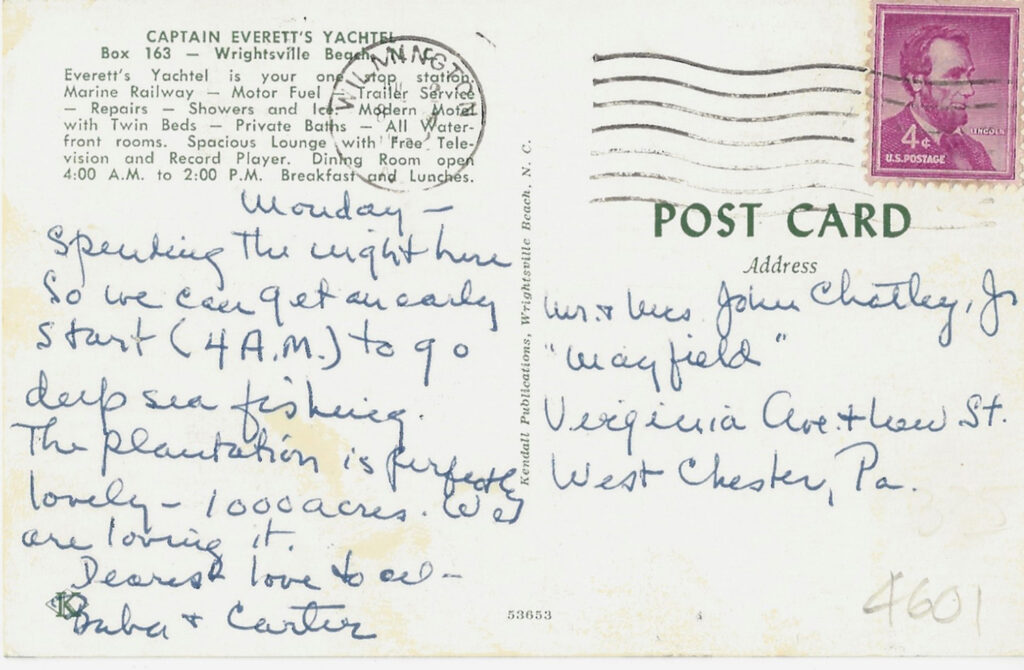Everett’s Yachtel on Causeway Drive
A Wrightsville Beach business pioneer
BY Pat Bradford
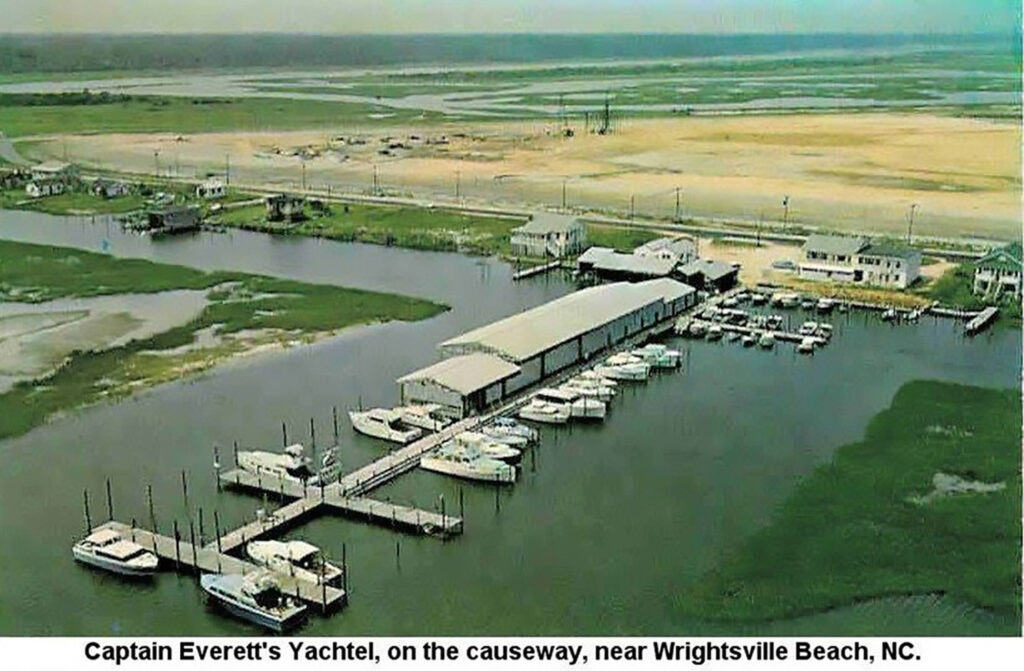
Everett’s Yachtel was a marina and motel on the Wrightsville Beach Causeway crossing present day Harbor Island, formerly known as The Hammocks.
With an early awareness of successful business branding, owner Martin Everett creatively combined yacht and motel to get the unique name. Everett went by the nickname Hot Shot Everett.
“Everybody knew him as Hot Shot,” says his nephew Tommy Gore, who has many fond memories of being there over the summers.
On this seldom seen postcard, the postmark cancellation date is indistinguishable. Gore says the photo would have been taken during the early 1950s.
On Oct. 15, 1954, Wrightsville Beach went under water and the town was partially destroyed by Hurricane Hazel. The storm made landfall with wind speeds approaching 150 mph. The Category 4 storm’s arrival coincided with a high tide on a full moon creating a storm surge that peaked a full 8 feet above the normal high-tide line. As many as 89 buildings, including the Carolina Yacht Club, were destroyed and another 155 suffered major damage. Most of the island’s fleet of fishing boats was scattered high and dry in the roadway including the Causeway. The loss of property was estimated to exceed $7 million.
“I can remember Hot Shot telling me they rode out Hazel there. He lived in the top apartment. He’d tell me the story of seeing the roof of the Fred Wenberg cottage go by his picture window,” Gore says.
In the background of the postcard, U.S. 74’s extension, Salisbury Street is not seen, because it had not yet been constructed. Lees Cut, however, is clearly depicted as is the Intracoastal Waterway in the far background.
“I think he sold it in the ‘60s,” Gore says. “Two guys from Fayetteville bought it.”
He remembers the two men as those who developed Seapath Towers and the marina as a boataminium.
In the postcard photograph, it appears Motts Channel has sharp marsh cuts, possibly after being dredged to fill in the Causeway.
Across the street and in the distance, the 25 acres devoid of trees and shrubs is sandy low ground and marsh where the town hall complex would be later built on the remains of the U.S. Department of the Interior, Office of Saline Water’s 15,000-gallon-per-day desalination test facility in the 1960s. (The land came back to the town in the early 1980s.)
To the left of the photo is the marsh where Seapath Tower and Seapath Marina would be built.
The postcard is addressed to Mr. and Mrs. John Chately Jr. at “Wayfield” located on Virginia Ave and New St. in West Chester, Pa.
The text reads as follows: “Monday – Spending the night here, so we can get an early start (4 A.M.) to go deep sea fishing. The plantation is perfectly lovely 1,000 acres. We are loving it. Dearest love to all – Barbara & Carter”
It has a 4 cent Lincoln stamp, postmarked Wilmington.
It was printed by Kendall Publications, Wrightsville Beach, N.C. William Kendall Dorsey (Bill or W.K.) and his wife, Mildred, were residents. She was a librarian at Wilmington College (now the University of North Carolina Wilmington). Mr. Dorsey’s hobby was photography and he turned it into a side job by printing some of his photos as postcards that he sold to local businesses.
The postcard’s printed text says: “Captain Everett’s Yachtel, Box 163, Wrightsville Beach, N.C. Everett’s Yachtel is your one stop station. Marine Railway – Motor Fuel – Trailer Service – Repairs – Showers and Ice – Modern Motel with Twin Beds – Private Baths – All Waterfront rooms. Spacious Lounge with Free Television and Record Player. Dining Room open 4 A.M. to 2 P.M. Breakfast and Lunches.”
To the right on the shore is the motel portion of the Yachtel where every room was waterfront with private baths.
“Back then they did not have self-bailing boats, after you had a rain they had to be bailed. That was my job. I went down there as a kid and bailed out boats for him, and fished off the dock,” Gore says.
At Everett’s, the main pier went out perpendicular to the Causeway, with covered sheds on the main dock, several finger piers, plus a T at the end.
“Hot Shot Everett marina and railway was right there just to the east of where Don Gilstrap’s house was built,” says Kit Taylor, a native of Wrightsville Beach.
Marinas in the ’50s were far more primitive than they are today. Lifting a boat or yacht from the water or launching it from shore from a trailer required a rail.
“Not many had a travel lift back then but Hot Shot had a railway. The Overbecks had Wrightsville Marina and they had a railway there, too,” Taylor says.
The Yachtel offered deep sea fishing trips.
“There was a captain, a Capt. White, who would take people out charter fishing, and Hot Shot would take people out fishing. This was in the Capt. Eddy days,” says Gore. “When you walked out on the dock, where boat sheds were, there were two nice mahogany Chris-Craft, and they belonged to Bill Bean and Hargrove Bellamy.”
Gore lists off other marina clientele he remembers: “‘Big’ Alec Trask kept his boat there. So did Henry Greene from Center Drug and Chris McKeithan, his father had a boat there.”
Harbor Island A Brief History
By WBM Staff
1888
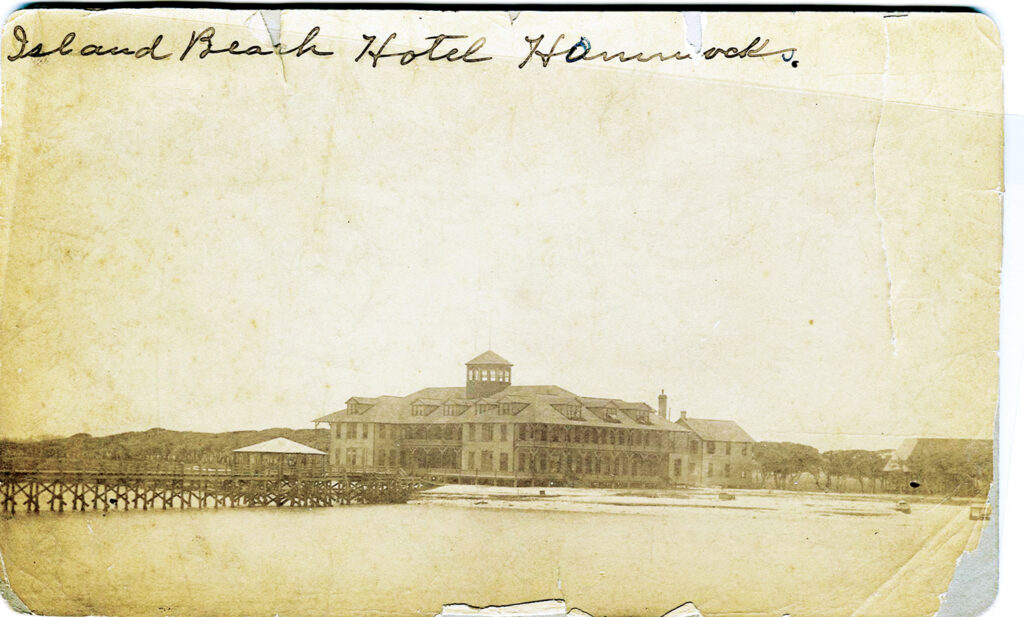
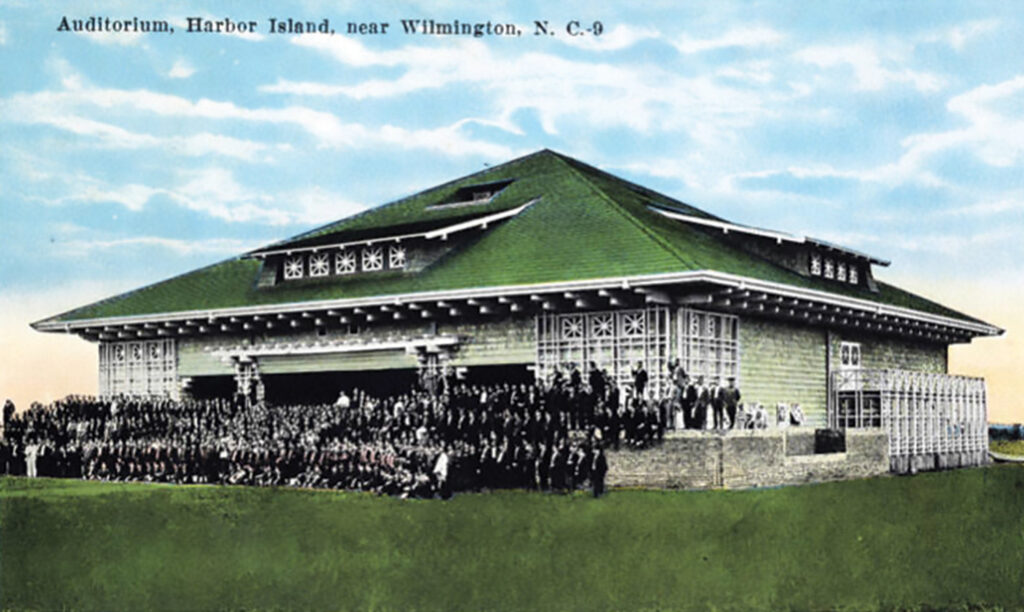
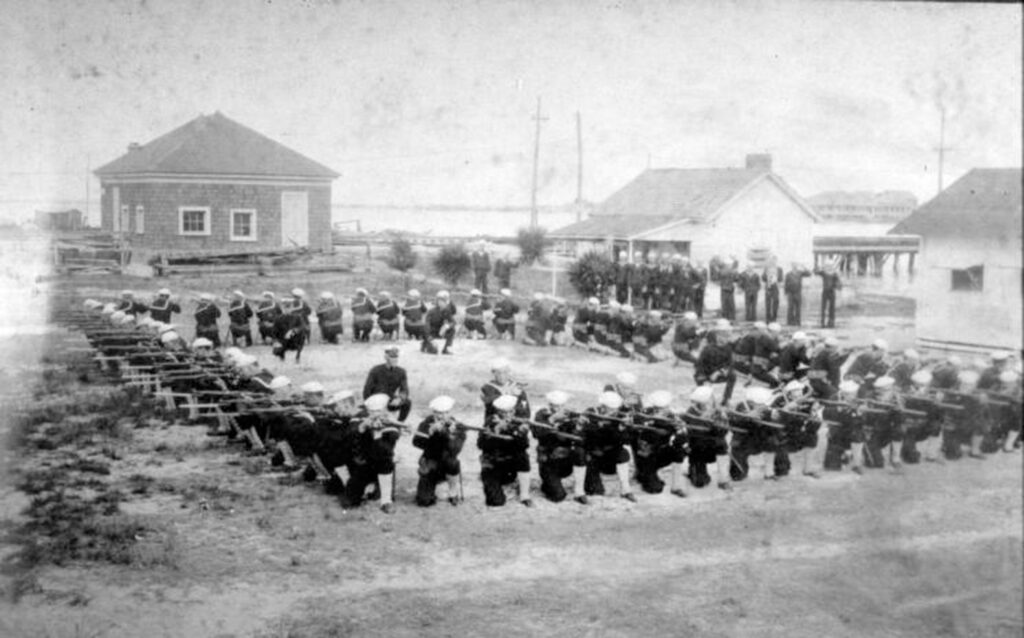
The Hammocks, now known as Harbor Island, was a low-lying island of sand dunes and marshes. The first building on the island, the Island Beach Hotel, opened on July 1, 1888. It was demolished in 1916 to build an auditorium that was used for large events. It was later used during World War I by the Navy for training. The building was torn down in 1936. Auditorium Circle currently marks its former location.
1925
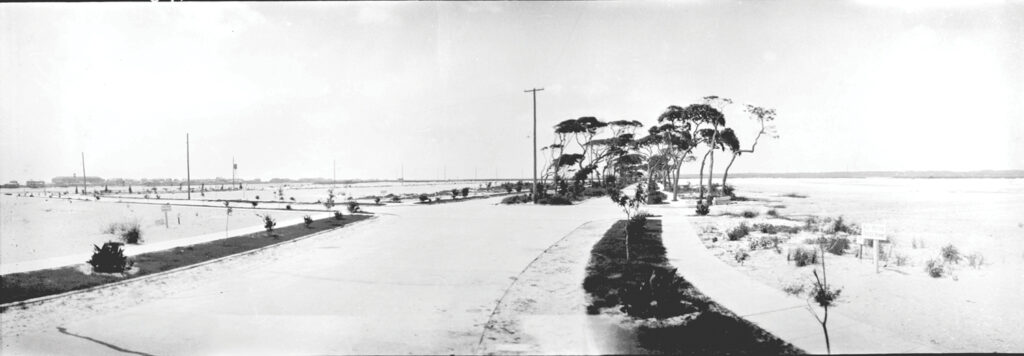
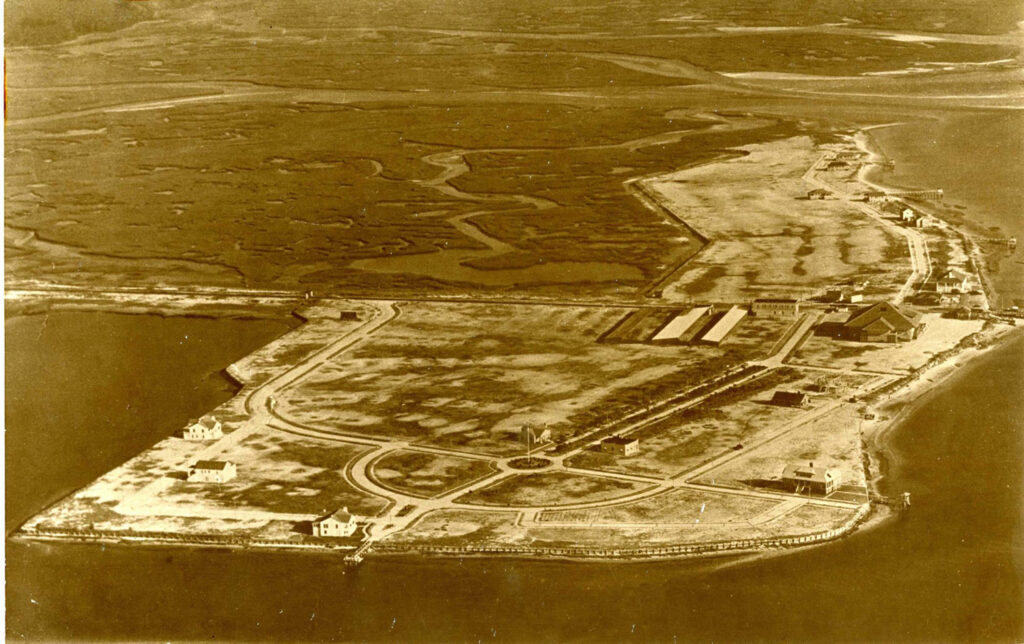
In the summer of 1925, the owners of a number of small wooden structures tucked among the dunes were notified that they must remove the buildings. The Shore Acres Company had contracted the Calkin Dredging Company to place 350,000 cubic yards of soil on Harbor Island at a cost of $400,000 with the plan of creating 350 or more buildable cottage sites.
1926
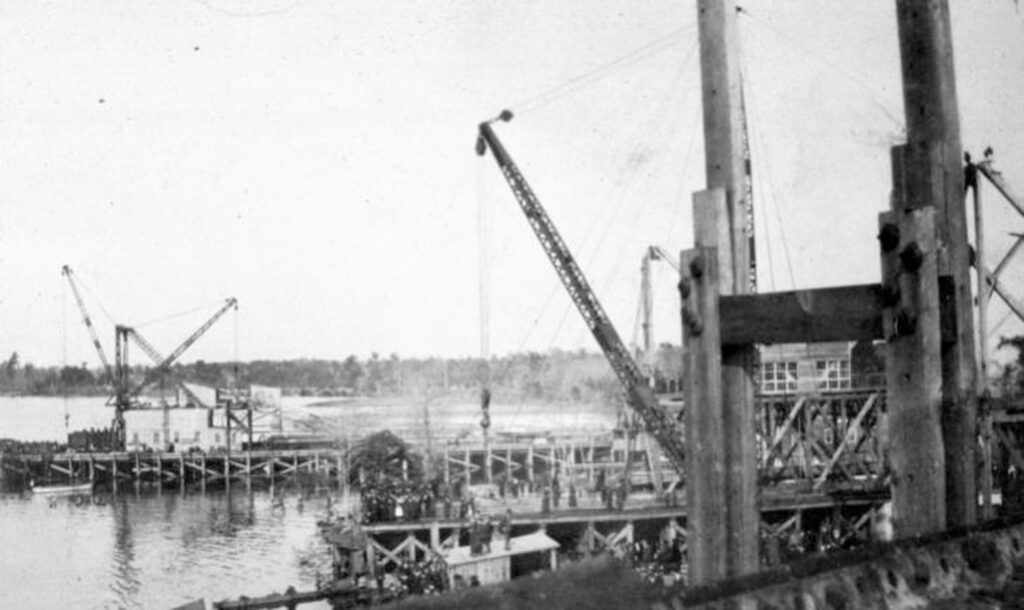
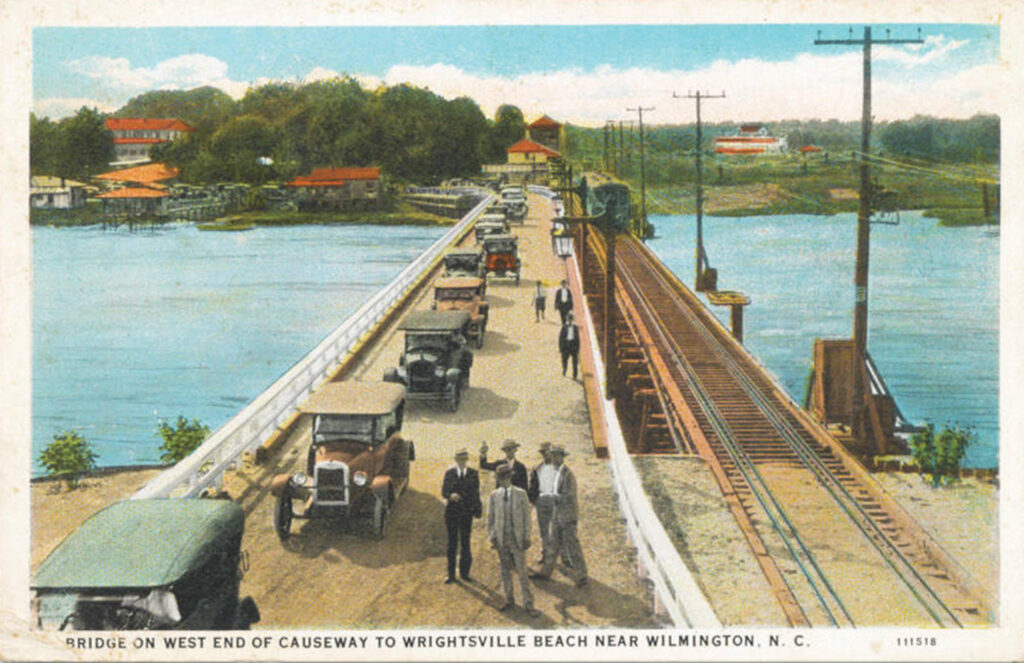
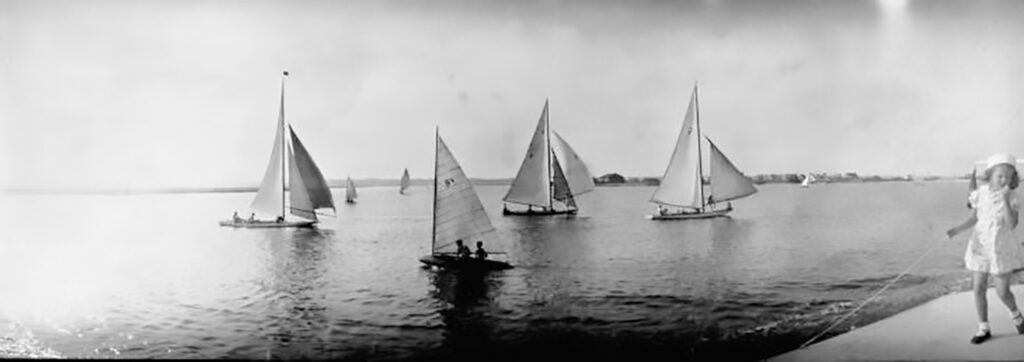
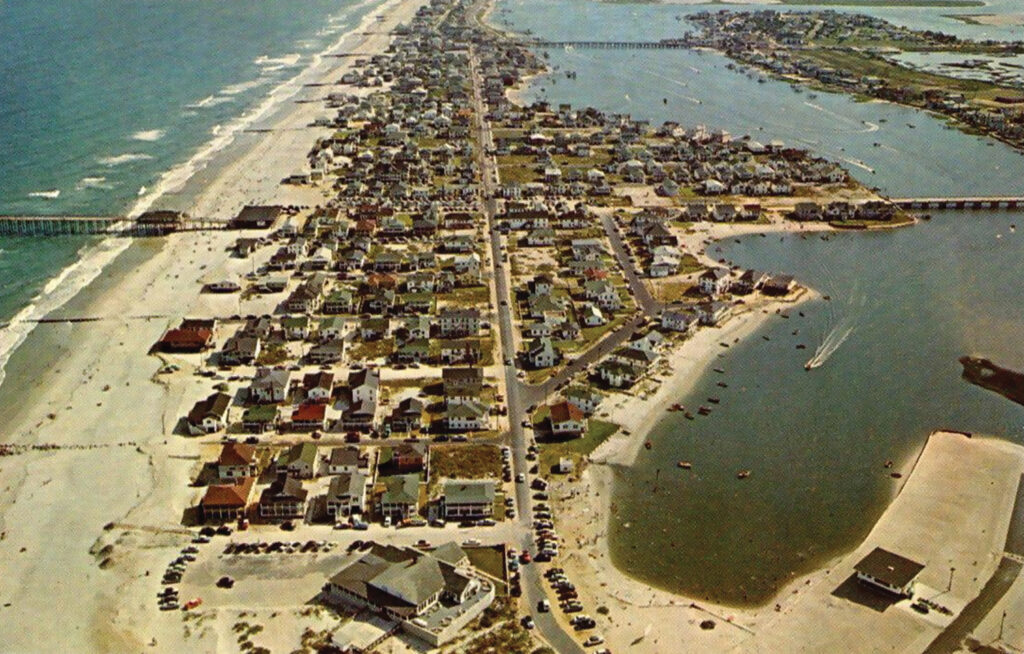
On June 10, 1926, the ribbon was cut to open the Causeway, a hard-surface road that ran parallel to the trolley line to Harbor Island by way of a 550-foot bridge. For the first time motorcars rolled onto the island, 700 strong. The mayor of Wilmington had declared the day a holiday and boat races in Banks Channel were followed by a celebratory banquet.
From Wrightsville Beach Magazine’s 110 People Places and Events That Shaped WB, January 2009.
